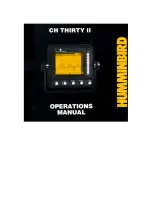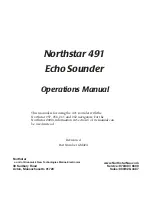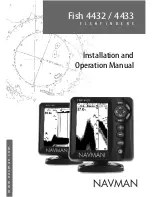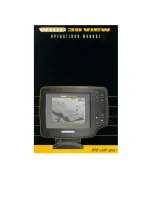
CH-THIRTY II OPERATIONS MANUAL
OPERATING YOUR CH THIRTY II
Before attempting to operate your Humminbird CH Thirty II, it is recommended that you read the
operations manual thoroughly. You will find several features on this unit, not found on any other
Chart Recorder. To completely understand all the features, we suggest you follow the instructions
set forth in this manual. If, after reading this manual, there is something you do not understand
about the operation of your unit, we recommend you contact our Customer Service Department.
INTRODUCTION
Theory of operation
Your CH-THIRTY II operates on the basic principal of sonar. Electronic signals generated within
the unit are converted to ultra-sonic signals and emitted through the transducer. These signals
travel through the water until they strike an object or the bottom. In either case, the signal is
reflected and returned to the transducer, reconverted to an electric signal and printed upon the
paper in the recorder. The paper is installed in a reusable cartridge and is driven by a roller which
makes contact with the paper take up roll. The paper speed is variable and may be adjusted from
an approximate three inches per minute advance to a one inch per minute advance. The speed of
this advance naturally governs the length of time it takes to use the standard 50 foot roll of paper.
The printing is done with a wire stylus mounted on a belt located on the right side of the paper
cartridge. When the front panel is lowered, the stylus is located on the back side when removing
or inserting the cartridge. The stylus picks up the signal from the brass bar with which the right
hand element makes contact. This signal is transmitted through the stylus and onto the specially
coated paper upon which a mark is burned, depicting the condition. The mark at the top of the
paper will indicate the surface of the water and is called the “zero” line.
A drive motor moves the stylus belt at various speeds, depending upon the depth range selected
on the unit. Each time the stylus passes across the face of the paper, a mark is made, As the
paper advances and the stylus passes across it, the picture begins to form. Thus a printing of the
surface, bottom and everything in between is printed on the chart paper.
Your CH-THIRTY II has been designed so that when operated with a properly installed
transducer the definition of the fish will appear as inverted “Vs” or Hooks as they are normally
called.
Generally the bigger the hooks, the larger the fish. Single fish may appear as small single hook,
while tightly schooled bait fish will appear as clouds of gray.
Since all fish will appear basically the same, knowledge of the behavior pattern of certain species
will aid in the identification of those fish below the boat.
The more directly the fish is beneath the boat, the more pronounced the inverted “V’ or hook. The
more rounded the hooks, the more to the right or left of the boat are the fish. A stationary fish will
produce a complete hook, beginning and ending at the same depth. A moving fish is an active
fish, which is more likely to be feeding, thus a more catchable fish.
Thus, the manner in which your fish tends to hook can be a clue as to size, specie, position and
activity.
Summary of Contents for CH Thirty II
Page 1: ......


















